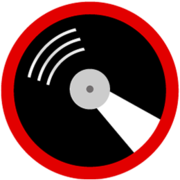# Contributing
Slipmat is a community project and all contributions are welcome.
# Tools
Slipmat development doesn't require any specific tools. You do, however, need to have a working development environment for Python 3 for backend code and Node / TYpeScript for frontend code.
# Languages
Current Slipmat codebase is currently written with
- Python
- Go
- Node
- TypeScript
- JavaScript
# Required tooling
You need the following:
- Node LTS
- Yarn (classic)
- Git
- GitLab account
- Discord account
- Slipmat / Backstage account
- FireFox (the officially supported and recommended browser for Slipmat projects) and Chrome for development and testing
# Recommended tooling
Apart from GitLab, you can use whatever tools work best for you, the following are just recommendations.
- VSCode
- Vetur extension for Vue development
- Live Share extension for pair programming
- Tailwind Intellisense extension for TailwindCSS
- Docker for running backend services
- Gitlab Runner for local testing
- Postman or some alternative (like Postwoman or Paw) for API development
- ngrok for tunneling requests from the Web to your local machine
- vue-devtools browser extension for developing and debugging Vue
# Coding Guidelines
We follow Contributing to Django (opens new window) guidelines as far as they make sense for Slipmat with the followin exceptions:
# Version control
- We are in process of moving to conventional commits and all new projects and new commits should use that format
- All code should be merged to trunk via marge requests, and merge requests should be reviewed and tested
# Frontend
- Follow Vue 3 Style Guide (opens new window)
- For code formatting, use repo-specific linting and formatting rules, namely
- Standard style as base
- No semi, single quote, trailing comma where it's allowed
- Configure your editor to lint and format on save
- All new code must be tested, no exceptions. Aim for 90%+ coverage
# GitLab
- Almost all Slipmat repositories have CI/CD pipelines for automatic testing, deployment and automatic review apps (auto-deployed versions for Merge Requests). For these to run correctly, you need to open your Merge Request from inside the project as you currently can't trigger pipelines from forks (see pipeline docs (opens new window) and gitlab-org/3278 (opens new window)). So instead of forking a project you are working on, just clone the project itself and create a new branch for our MRs.
- Merge Requests are for humans so whenever opening a new MR for a feature or larger task, use some time in making it human-readable and as clear as possible. This means 1) using a well-written title, 2) describing the task clearly in the MR description, 3) referencing all related tickets, other MRs and other relevant data in the description, 4) providing screenshots and other design documents if relevant, and 5) keeping the MR description up to date at all times. Do also use task lists inside the description whenever possible to make it easier for others to see and follow the status of the MR.
- GitLab is our single point of truth and main collaboration tool so all our important design decisions and other relevant discussion should happen in the ticket and merge request comments. Feel free to link planning documents and other external data as well.
- Code review is one of the most effective ways to learn and offer help to your peers. Try to contribute to as many MR:s as you can. Please be civil with your comments.
- It's advisable to learn GitLab keyboard shortcuts (opens new window)
# Contributor Responsibilities
Slipmat is a community project and not owned by any company. This means that individuals are responsible for developing and running the services. Currently all code is owned by Ville Säävuori and he is also the controller and processor of GDPR-related data. Our aim is to move Slipmat under a non-profit corporation or a similar entity but before that happens we want to make sure all our volunteers understand they responsibilities and only participate as much as they feel comfortable.
To put it short: Slipmat volunteers are not responsible for anything that happens on Slipmat or because of Slipmat.
# Contributor License Agreement
Slipmat is not yet open source (we hope to be one day) and it's important that all contributors sign a Contributor License Agreement so that the code ownership stays clear. By signing the CLA, you state that you are entitled to contibute that code and are willing to it be used by Slipmat and any derivative works. The CLA also ensures that once you have provided a contribution, you cannot try to withdraw permission for its use at a later date.
CLA is a license agreement, not a copyright assignment. You still maintain the full copyright for your contributions. You are only providing a license to Slipmat to distribute your code without further restrictions.
When you volunteer for development work on Slipmat, we will ask you to sign a CLA before you commit any code.
